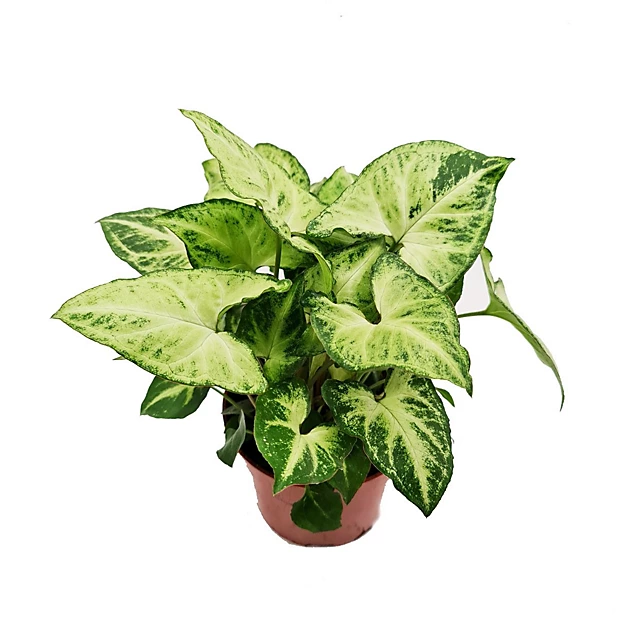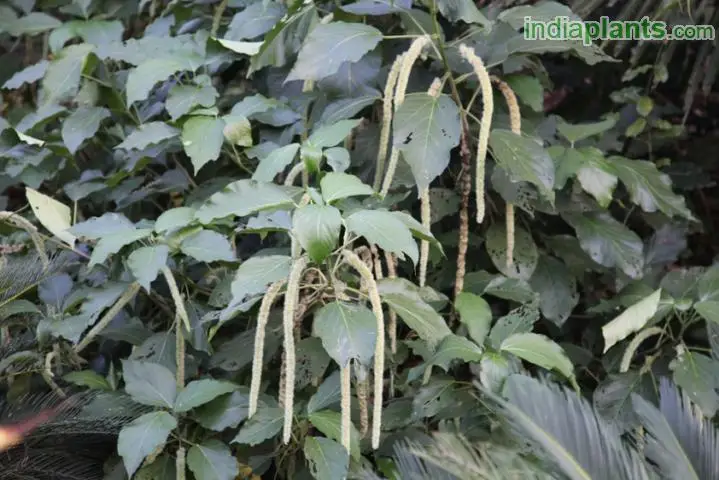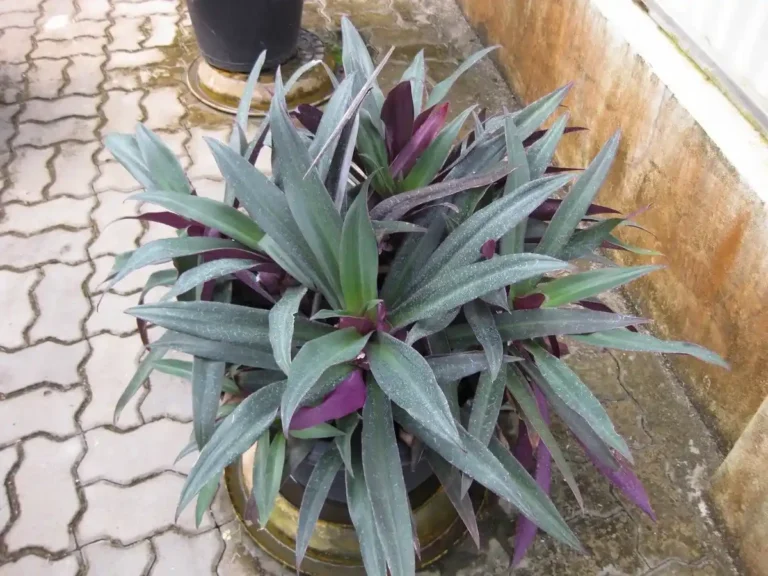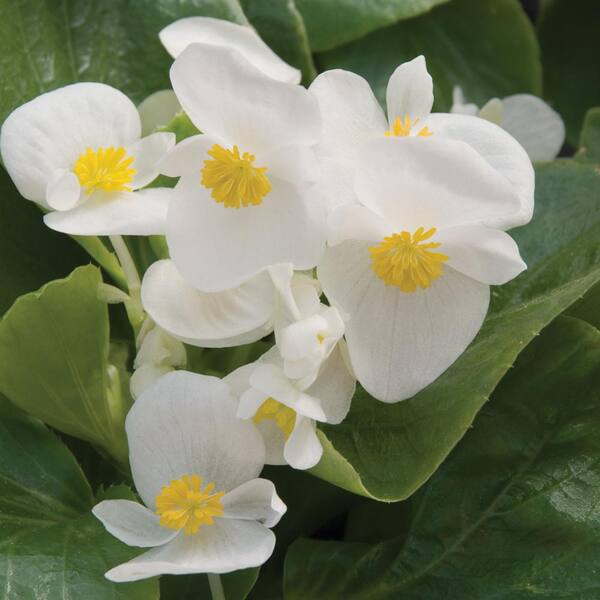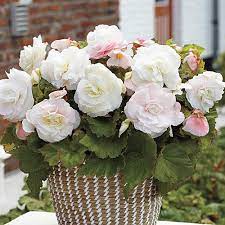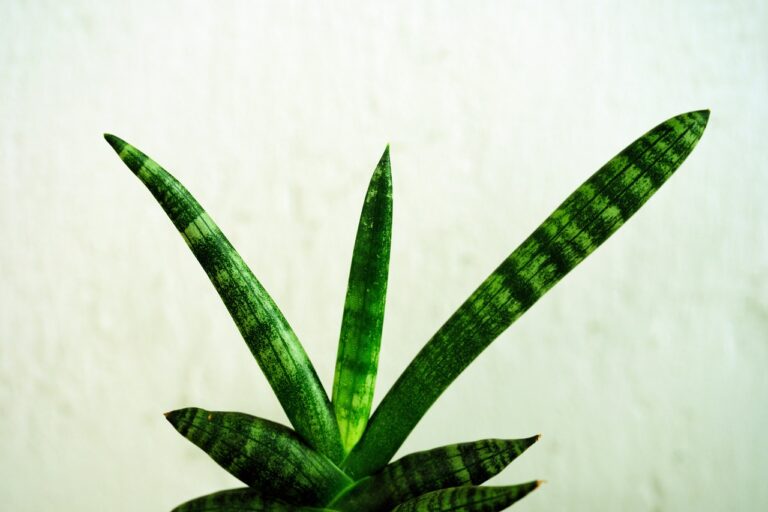Introduction:
Transform your living space into a fragrant haven with the captivating allure of indoor plants. The subtle yet enchanting aromas of jasmine, lavender, and citrus can effortlessly elevate the ambiance of your home. In this article, we’ve curated a list of beautiful indoor plants that not only bring a symphony of scents but also add a touch of natural elegance to your surroundings. Dive into the world of these delightful plants, each with its unique fragrance and charm, and discover how simple it is to create a home filled with the refreshing and soothing essence of nature. Let’s embark on a journey to explore the top fragrant indoor plants that will not only stimulate your senses but also enhance the beauty of your living space.
1. Jasmine (Jasminum):
Jasmine, with its delicate white flowers and intoxicating fragrance, is a timeless favorite for indoor gardening enthusiasts. This beautiful plant not only adds aesthetic appeal to your home but also fills the air with a sweet and floral scent that can instantly lift your spirits.

Plant Care Tips:
- Light: Place your jasmine plant in a bright location with indirect sunlight.
- Watering: Keep the soil consistently moist but not waterlogged.
- Temperature: Jasmine thrives in warm temperatures, so maintain a comfortable indoor climate.
- Fertilization: Feed with a balanced fertilizer during the growing season.
- Pruning: Trim the plant regularly to maintain its shape and encourage blooming.
Why Choose Jasmine: Jasmine is not only known for its delightful fragrance but also for its symbolic significance. In many cultures, it symbolizes love, beauty, and good luck. Adding a jasmine plant to your indoor garden not only brings a pleasant aroma but also carries a touch of cultural richness.
Incorporating Jasmine Into Your Home: Place Jasmine in areas where you spend time relaxing, such as the living room or bedroom, to maximize its calming effect. Consider using a decorative trellis to showcase the climbing nature of certain jasmine varieties, adding a touch of elegance to your living space.
By introducing jasmine into your indoor garden, you’re not just enhancing the olfactory experience of your home but also embracing a plant deeply rooted in symbolism and tradition. Enjoy the sweet fragrance and visual charm that jasmine brings, making it a must-have for any indoor plant enthusiast.
2. Lavender (Lavendula):
Lavender, known for its soothing scent and striking purple blooms, is a versatile and low-maintenance indoor plant. With its aromatic foliage, lavender not only adds a touch of elegance to your home but also provides a calming atmosphere.

Plant Care Tips:
- Light: Lavender thrives in full sunlight, so place it in a sunny window or under grow lights.
- Watering: Allow the soil to dry between watering to prevent root rot.
- Pruning: Regularly trim the plant to encourage bushiness and enhance its aromatic qualities.
- Temperature: Lavender prefers cool to moderate temperatures, making it suitable for indoor environments.
- Soil: Use well-draining soil to prevent waterlogging.
Why Choose Lavender: Apart from its delightful fragrance, lavender is renowned for its calming properties. The scent of lavender has been associated with stress reduction and improved sleep quality, making it a perfect addition to areas where relaxation is key.
Incorporating Lavender Into Your Home: Place lavender in areas where you unwind, such as bedrooms or reading nooks. Consider drying the flowers and creating sachets to infuse your linens with the calming scent. Lavender also pairs well with other fragrant plants, creating a harmonious blend of aromas in your indoor garden.
By introducing lavender into your home, you not only enjoy its visually appealing blooms but also harness the therapeutic benefits of its fragrance. Elevate your indoor environment with the soothing and refreshing essence of lavender, creating a space that promotes tranquility and well-being.
3. Mint (Mentha spicata):
Mint, with its invigorating aroma and culinary versatility, is a delightful addition to any indoor garden. Beyond its aromatic leaves, mint plants offer a refreshing fragrance that can enliven your home and even serve practical purposes in the kitchen.

Plant Care Tips:
- Light: Mint prefers bright, indirect light but can tolerate some shade.
- Watering: Keep the soil consistently moist, allowing the top inch to dry between watering.
- Pruning: Regularly trim mint to control its growth and encourage bushiness.
- Container: Plant mint in a container to prevent it from spreading aggressively.
- Fertilization: Feed with a balanced fertilizer during the growing season.
Why Choose Mint: Mint is renowned for its versatile uses, from flavoring teas and dishes to its medicinal properties. The refreshing scent of mint can invigorate your senses and create a lively atmosphere in your home.
Incorporating Mint Into Your Home: Place mint in the kitchen for easy access to fresh leaves for culinary endeavors. Additionally, the aromatic presence of mint can combat odors, making it an ideal choice for areas prone to cooking smells.
Whether you’re a culinary enthusiast or simply appreciate the revitalizing fragrance of mint, incorporating this herb into your indoor garden adds both practicality and sensory delight. Enjoy the vibrant greenery and invigorating aroma of mint as it enhances the atmosphere of your home.
4. Begonia:
Begonias, with their vibrant blooms and subtle fragrances, bring a touch of elegance to indoor gardens. These flowering plants not only add visual appeal but also infuse your home with a delicate and sweet scent.

Plant Care Tips:
- Light: Begonias thrive in bright, indirect light, making them suitable for well-lit indoor spaces.
- Watering: Keep the soil consistently moist but avoid waterlogging.
- Humidity: Begonias appreciate higher humidity levels, so consider misting the leaves.
- Fertilization: Feed with a balanced fertilizer during the growing season.
- Pruning: Remove spent blooms to encourage continuous flowering.
Why Choose Begonia: Begonia comes in various colors and shapes, offering a versatile option for indoor gardeners. Beyond their aesthetic appeal, begonias emit a gentle fragrance that adds a subtle touch of sweetness to your living space.
Incorporating Begonia Into Your Home: Place begonias in areas where you want to add a pop of color and a hint of fragrance, such as on tabletops or windowsills. Consider combining different begonia varieties to create a visually stunning and aromatic display.
By introducing begonias into your indoor garden, you not only enjoy the beauty of their blooms but also experience the delightful fragrance they bring. Enhance your living space with the subtle and charming scent of begonias, making them a wonderful choice for anyone seeking both visual and olfactory pleasure in their indoor plants.
5. Citrus (Calamondin Orange Tree):
The fragrant allure of citrus can brighten up any indoor space, and the Calamondin Orange Tree is a perfect choice for those seeking both aesthetics and a burst of citrusy aroma. This potted tree not only adds a touch of freshness but also offers the potential for homegrown citrus fruits.
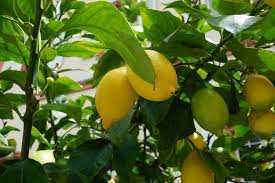
Plant Care Tips:
- Light: Provide ample sunlight, placing the Calamondin Orange Tree in a south-facing window.
- Watering: Keep the soil consistently moist but not waterlogged.
- Temperature: Maintain a warm environment, as citrus trees prefer temperatures between 70-80°F (21-27°C).
- Fertilization: Feed with a citrus fertilizer during the growing season.
- Pruning: Trim to shape the tree and remove dead or crowded branches.
Why Choose Calamondin Orange Tree: The Calamondin Orange Tree is cherished not only for its fragrant blooms but also for the potential to harvest small, tangy oranges. Its citrusy scent adds a refreshing and invigorating atmosphere to your home.
Incorporating Calamondin Orange Tree Into Your Home: Place this citrus tree in a sunny spot in your home, such as the kitchen or living room, to maximize its exposure to sunlight. The visual appeal of its glossy green leaves and the promise of tiny oranges make it a conversation-worthy addition to your indoor garden.
Bringing the delightful scent of citrus indoors with the Calamondin Orange Tree not only adds freshness but also introduces the possibility of enjoying homegrown citrus fruits. Elevate your indoor gardening experience with the invigorating fragrance and visual charm of this citrusy delight.
6. Orchids (Oncidium Orchid):
Orchids, with their exotic beauty and subtle fragrance, are a sophisticated choice for indoor gardens. Among the vast array of orchid varieties, the Oncidium Orchid stands out with its stunning blooms and delicate scent that adds an elegant touch to your living space.
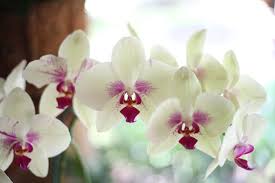
Plant Care Tips:
- Light: Provide bright, indirect light for the Oncidium Orchid, avoiding direct sunlight.
- Watering: Allow the potting mix to dry slightly between watering, ensuring proper drainage.
- Humidity: Orchids thrive in high humidity, so consider misting the leaves or placing a humidifier nearby.
- Temperature: Maintain a temperature range of 60-80°F (16-27°C).
- Fertilization: Use a balanced orchid fertilizer during the growing season.
Why Choose Oncidium Orchid: Oncidium Orchids are known for their vibrant and diverse blooms, coupled with a subtle fragrance that varies between sweet and spicy. These orchids add an air of sophistication to your indoor garden.
Incorporating Oncidium Orchid Into Your Home: Place the Oncidium Orchid in areas where you want to make a statement, such as on a prominent tabletop or as a centerpiece. The visual drama of its intricate blooms and the delicate fragrance make it a captivating addition to any room.
Choosing the Oncidium Orchid for your indoor garden not only introduces a stunning visual element but also brings the allure of orchids’ subtle fragrance. Elevate the ambiance of your home with the sophisticated charm of these exotic blooms, making them a perfect choice for those who appreciate both beauty and fragrance in their indoor plants.
7. Lily of the Valley:
Lily of the Valley, with its dainty bell-shaped flowers and sweet fragrance, adds a touch of woodland charm to your indoor garden. This perennial plant is not only visually appealing but also fills your space with a delicate, lingering scent.

Plant Care Tips:
- Light: Provide partial to full shade for the Lily of the Valley, as it thrives in woodland-like conditions.
- Watering: Keep the soil consistently moist, ensuring proper drainage to prevent waterlogged roots.
- Temperature: Lily of the Valley prefers cooler temperatures and can tolerate a range from 50-70°F (10-21°C).
- Soil: Plant in well-draining, rich soil with organic matter.
- Division: Divide the plant as needed to control its spread and maintain vigor.
Why Choose Lily of the Valley: Beyond its visual appeal, Lily of the Valley is celebrated for its sweet fragrance, often described as a combination of floral and citrus notes. This plant brings a touch of nature’s woodland essence into your home.
Incorporating Lily of the Valley Into Your Home: Place Lily of the Valley in shaded corners or near windows where it can receive filtered sunlight. The fragrance of this plant makes it a perfect addition to bedrooms or areas where you want to create a calm and soothing atmosphere.
Choosing Lily of the Valley for your indoor garden introduces not only delicate blooms but also a fragrance reminiscent of serene woodland landscapes. Enjoy the subtle and timeless charm that this perennial plant brings to your home, creating a space that captures the essence of nature’s beauty.
8. Heliotrope:
Heliotrope, with its clusters of tiny, fragrant flowers, is a charming addition to any indoor garden. Known for its sweet and vanilla-like scent, this plant brings a delightful aroma reminiscent of summer gardens.
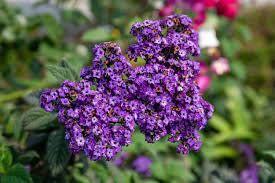
Plant Care Tips:
- Light: Provide bright, indirect sunlight for the Heliotrope, ensuring it receives at least 6 hours of light per day.
- Watering: Keep the soil consistently moist but not waterlogged, and avoid allowing the soil to dry out completely.
- Temperature: Heliotrope prefers warmer temperatures, ranging between 60-75°F (15-24°C).
- Pruning: Regularly deadhead spent flowers to encourage continuous blooming.
- Fertilization: Feed with a balanced fertilizer during the growing season.
Why Choose Heliotrope: Heliotrope is cherished for its captivating fragrance, often described as a blend of vanilla and cherry. The sweet scent lingers in the air, making it a delightful choice for those who appreciate floral and gourmand notes.
Incorporating Heliotrope Into Your Home: Place Heliotrope in areas where you want to add a touch of sweetness to the air, such as living rooms or dining spaces. The compact size of the plant makes it suitable for various settings, from windowsills to tabletops.
Choosing a Heliotrope for your indoor garden not only introduces a visually appealing plant but also infuses your home with a sweet and summery fragrance. Enjoy the charming blooms and delightful aroma of Heliotrope, creating a warm and inviting atmosphere in your indoor space.
9. Hoya:
Hoya, also known as wax flower, is a unique and resilient indoor plant that adds an exotic touch to your garden. Renowned for its waxy, star-shaped flowers and subtle fragrance, Hoya is an excellent choice for those seeking a low-maintenance yet captivating plant.
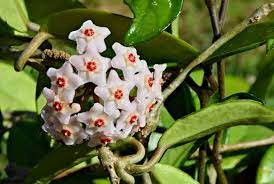
Plant Care Tips:
- Light: Hoya prefers bright, indirect light but can tolerate some shade.
- Watering: Allow the top inch of soil to dry before watering, and be cautious not to overwater.
- Temperature: Maintain a warm environment, as Hoyas thrive in temperatures between 60-80°F (15-27°C).
- Humidity: Higher humidity levels are beneficial, so consider misting the leaves or placing a humidifier nearby.
- Pruning: Prune to control its size and shape, and remove spent flowers.
Why Choose Hoya: Hoya’s distinctive waxy flowers and glossy leaves make it a visually striking plant. The subtle fragrance, often described as sweet and reminiscent of honey, adds an extra layer of appeal to this unique indoor gem.
Incorporating Hoya Into Your Home: Place Hoya in hanging baskets or allow it to cascade from shelves to showcase its trailing nature. The captivating fragrance makes it an ideal choice for areas where you want to enjoy a pleasant scent, such as living rooms or bedrooms.
Choosing Hoya for your indoor garden not only brings a touch of the exotic with its unique appearance but also introduces a subtle and sweet fragrance. Enjoy the visual allure and aromatic charm of Hoya, making it a wonderful addition to any indoor space.
10. Eucalyptus (Eucalyptus globulus):
Eucalyptus, with its distinctive fragrance and elegant, silvery leaves, is a versatile and invigorating addition to indoor gardens. Known for its therapeutic properties, this plant not only adds a refreshing scent to your home but also contributes to a soothing atmosphere.
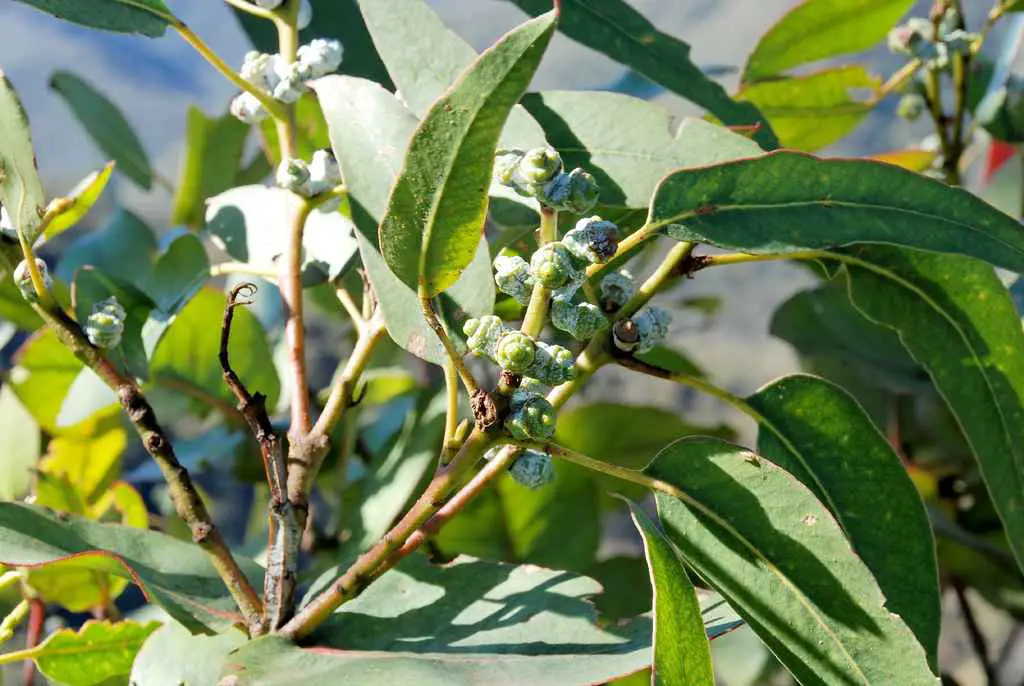
Plant Care Tips:
- Light: Provide bright, indirect sunlight for Eucalyptus, as it thrives in well-lit conditions.
- Watering: Keep the soil consistently moist but not waterlogged; mist the leaves regularly.
- Temperature: Eucalyptus prefers a cooler environment, with temperatures ranging from 50-70°F (10-21°C).
- Pruning: Regularly trim the plant to control its growth and encourage bushiness.
- Harvesting: Harvest leaves as needed for various uses, such as aromatic arrangements or DIY projects.
Why Choose Eucalyptus: Beyond its aesthetic appeal, Eucalyptus is renowned for its invigorating fragrance, often associated with respiratory benefits and stress relief. The fresh scent creates a spa-like ambiance in your home.
Incorporating Eucalyptus Into Your Home: Place Eucalyptus in areas where you want to promote a sense of calm, such as bedrooms or relaxation spaces. Consider incorporating the leaves into decorative arrangements, wreaths, or potpourri for an added touch of natural fragrance.
Choosing Eucalyptus for your indoor garden not only introduces a visually striking plant but also brings the therapeutic benefits of its invigorating scent. Enjoy the fresh and uplifting aroma of Eucalyptus, creating a tranquil and rejuvenating atmosphere in your indoor space.
11. Tuberose:
Tuberose, with its tall, elegant spikes of white, star-shaped flowers and a heady, sweet fragrance, is a captivating addition to any indoor garden. Known for its intoxicating scent, Tuberose adds a touch of luxury and sensuality to your living space.

Plant Care Tips:
- Light: Provide bright, indirect light for Tuberose, as it benefits from ample sunlight.
- Watering: Keep the soil consistently moist, especially during the growing season.
- Temperature: Maintain a warm environment, as Tuberose thrives in temperatures between 60-70°F (15-21°C).
- Fertilization: Feed with a balanced fertilizer during the growing season.
- Support: As Tuberose grows tall, provide support to prevent the stems from bending.
Why Choose Tuberose: Tuberose is renowned for its intense and seductive fragrance, often used in perfumery for its alluring and exotic notes. The sweet scent, reminiscent of jasmine but with a unique character, adds a touch of romance to your indoor garden.
Incorporating Tuberose Into Your Home: Place Tuberose in areas where you want to create a romantic and sensual atmosphere, such as bedrooms or sitting areas. Consider cutting the fragrant spikes to create elegant floral arrangements that not only look stunning but also perfume your home.
Choosing Tuberose for your indoor garden introduces a plant that not only boasts visually striking blooms but also brings a luxurious and captivating fragrance. Revel in the heady scent of Tuberose, transforming your living space into a haven of romance and elegance.
12. Plumeria (Plumeria rubra):
Plumeria, with its vibrant and tropical blooms, is a stunning addition to indoor gardens. Known for its captivating fragrance, reminiscent of the tropics, this plant not only adds visual appeal but also infuses your home with a delightful, sweet scent.
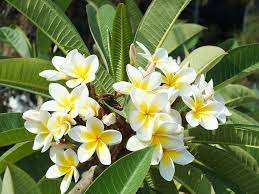
Plant Care Tips:
- Light: Provide full sunlight for Plumeria, placing it in a sunny window or under grow lights.
- Watering: Allow the soil to dry out between watering, as Plumeria prefers a drier environment.
- Temperature: Maintain a warm environment, with temperatures above 60°F (15°C).
- Fertilization: Feed with a balanced fertilizer during the growing season.
- Pruning: Trim the plant to control its size and shape, removing dead or crowded branches.
Why Choose Plumeria: Plumeria is celebrated for its tropical beauty and the enchanting fragrance of its blooms. The sweet and exotic scent, often likened to a mix of jasmine and citrus, transports you to sun-kissed locales and adds a touch of paradise to your indoor space.
Incorporating Plumeria Into Your Home: Place Plumeria in areas where you want to evoke a tropical ambiance, such as living rooms or sunny corners. The vibrant blooms and intoxicating fragrance make it a focal point, creating a sense of vacation right in your own home.
Choosing Plumeria for your indoor garden not only brings the allure of tropical beauty but also infuses your home with the sweet and exotic fragrance of its blooms. Enjoy the visual spectacle and the delightful scent of Plumeria, turning your indoor space into a tropical retreat.
13. Passionflower:
Passionflower, with its intricate and vibrant blooms, is a captivating addition to indoor gardens. Beyond its visual appeal, this plant is known for its unique fragrance, adding an exotic and aromatic touch to your living space.
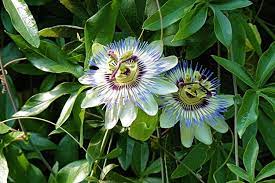
Plant Care Tips:
- Light: Provide bright, indirect light for Passionflower, ensuring it receives ample sunlight.
- Watering: Keep the soil consistently moist, especially during the growing season.
- Temperature: Maintain a warm environment, with temperatures between 65-75°F (18-24°C).
- Support: Passionflower is a climbing plant, so provide support such as a trellis or stake.
- Fertilization: Feed with a balanced fertilizer during the growing season.
Why Choose Passionflower: Passionflower is renowned for its intricate and symbolic blooms, often associated with a sense of mystery and beauty. The unique fragrance, a blend of floral and fruity notes, adds an exotic and alluring aspect to your indoor garden.
Incorporating Passionflower Into Your Home: Place Passionflower in areas where you want to create a sense of mystery and intrigue, such as entryways or living rooms. Consider letting it climb on a trellis, adding a vertical element to your indoor garden while showcasing its unique blooms.
Choosing Passionflower for your indoor garden not only introduces a visually stunning plant but also brings a touch of the exotic with its unique and alluring fragrance. Immerse yourself in the beauty and mystery of Passionflower, making it a captivating addition to your indoor space.
14. Angel’s Trumpet:
Angel’s Trumpet, with its large, trumpet-shaped flowers and intoxicating fragrance, is a show-stopping addition to any indoor garden. Known for its dramatic beauty and sweet scent, this plant creates a focal point that is both visually stunning and aromatic.
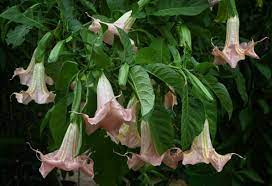
Plant Care Tips:
- Light: Provide bright, indirect light for Angel’s Trumpet, ensuring it receives at least 6 hours of sunlight per day.
- Watering: Keep the soil consistently moist, especially during the growing season.
- Temperature: Maintain a warm environment, with temperatures ranging from 65-75°F (18-24°C).
- Fertilization: Feed with a balanced fertilizer during the growing season.
- Pruning: Regularly trim the plant to control its size and shape, and remove spent flowers.
Why Choose Angel’s Trumpet: Angel’s Trumpet is renowned for its impressive and large flowers that resemble trumpets, creating a visually dramatic display. The sweet and floral fragrance, especially noticeable in the evening, adds an enchanting and romantic atmosphere to your indoor space.
Incorporating Angel’s Trumpet Into Your Home: Place Angel’s Trumpet in areas where you want to create a focal point and draw attention to its stunning blooms. Consider enjoying its fragrance during the evening, as the scent tends to be more pronounced at night.
Choosing Angel’s Trumpet for your indoor garden introduces a plant that not only boasts impressive visual appeal but also brings an enchanting and sweet fragrance. Create a captivating and romantic atmosphere in your home with the dramatic beauty of Angel’s Trumpet.
15. Arabian Jasmine:
Arabian Jasmine, with its small, white, fragrant flowers, is a classic and enchanting addition to indoor gardens. Known for its sweet and exotic scent, this plant brings a touch of elegance and timeless beauty to your living space.
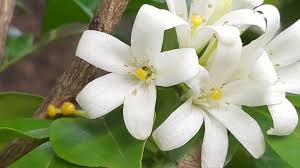
Plant Care Tips:
- Light: Provide bright, indirect light for Arabian Jasmine, ensuring it receives sufficient sunlight.
- Watering: Keep the soil consistently moist, especially during the growing season.
- Temperature: Maintain a warm environment, with temperatures between 65-75°F (18-24°C).
- Humidity: Arabian Jasmine appreciates higher humidity levels, so mist the leaves regularly.
- Fertilization: Feed with a balanced fertilizer during the growing season.
Why Choose Arabian Jasmine: Arabian Jasmine is cherished for its delicate and aromatic flowers, often used in perfumery for its sweet and exotic fragrance. The timeless beauty of its blooms and the alluring scent make it a popular choice for indoor gardens.
Incorporating Arabian Jasmine Into Your Home: Place Arabian Jasmine in areas where you want to create a sense of classic beauty and romance, such as bedrooms or sitting areas. Consider using the freshly cut blooms in floral arrangements to enjoy the fragrance throughout your home.
Choosing Arabian Jasmine for your indoor garden not only introduces a visually appealing plant but also brings the timeless beauty of its fragrant blooms. Transform your living space into a haven of elegance and romance with the enchanting presence of Arabian Jasmine.
16. Cuban Oregano:
Cuban Oregano, also known as Mexican Mint, is a flavorful and aromatic herb that adds a culinary and fragrant dimension to indoor gardens. With its thick, succulent leaves and a distinctive aroma, this herb is a versatile and low-maintenance choice for both cooking and ornamental purposes.
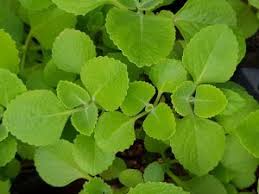
Plant Care Tips:
- Light: Provide bright, indirect light for Cuban Oregano, ensuring it receives at least 4-6 hours of sunlight per day.
- Watering: Allow the top inch of soil to dry between watering, as Cuban Oregano prefers well-draining soil.
- Temperature: Maintain a warm environment, with temperatures between 70-90°F (21-32°C).
- Pruning: Regularly trim the plant to encourage bushiness and harvest leaves for culinary use.
- Fertilization: Feed with a balanced fertilizer during the growing season.
Why Choose Cuban Oregano: Cuban Oregano stands out for its robust and aromatic leaves, which emit a strong oregano-like scent. Beyond its culinary uses, the fragrance of this herb adds a pleasant and savory note to your indoor garden.
Incorporating Cuban Oregano Into Your Home: Place Cuban Oregano in your kitchen or near cooking areas for easy access to its flavorful leaves. Consider using it in culinary dishes to impart a unique and savory aroma to your meals.
Choosing Cuban Oregano for your indoor garden introduces a herb that not only enhances your culinary endeavors but also adds a distinctive fragrance to your home. Enjoy the versatility and aromatic charm of Cuban Oregano, making it a flavorful and fragrant addition to your indoor space.
17. Scented Geranium (Pelargonium graveolens):
Scented Geranium, with its fragrant leaves and vibrant blooms, is a delightful and aromatic addition to indoor gardens. Known for its diverse range of scents, this plant brings a burst of fragrance and visual appeal to your living space.
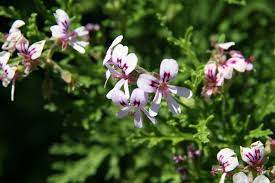
Plant Care Tips:
- Light: Provide bright, indirect light for Scented Geranium, ensuring it receives sufficient sunlight.
- Watering: Keep the soil consistently moist but not waterlogged, allowing the top inch to dry between watering.
- Temperature: Maintain a moderate environment, with temperatures between 60-75°F (15-24°C).
- Pruning: Regularly trim the plant to control its size and shape, and pinch back spent blooms.
- Fertilization: Feed with a balanced fertilizer during the growing season.
Why Choose Scented Geranium: Scented Geranium is prized for its aromatic leaves, each variety offering a distinct fragrance ranging from rose and lemon to mint and citrus. The diverse scents make it a versatile choice for indoor gardens, allowing you to customize the fragrance in your home.
Incorporating Scented Geranium Into Your Home: Place Scented Geranium in areas where you want to enjoy its specific fragrance, such as kitchens, living rooms, or bedrooms. Consider creating a sensory experience by grouping different varieties together to create a fragrant and visually appealing display.
Choosing Scented Geranium for your indoor garden introduces a plant that not only boasts vibrant blooms but also offers a range of delightful fragrances. Immerse yourself in the aromatic world of Scented Geranium, creating a personalized and fragrant atmosphere in your indoor space.
18. Gardenia (Gardenia jasminoides):
Gardenia, with its exquisite white blooms and sweet, intoxicating fragrance, is a classic and elegant choice for indoor gardens. Known for its romantic and timeless appeal, this plant adds a touch of luxury and sensory delight to your living space.
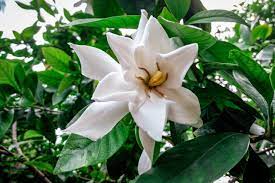
Plant Care Tips:
- Light: Provide bright, indirect light for Gardenia, ensuring it receives sufficient sunlight.
- Watering: Keep the soil consistently moist but not waterlogged, and use distilled or rainwater if possible.
- Temperature: Maintain a warm environment, with temperatures between 65-75°F (18-24°C).
- Humidity: Gardenias thrive in high humidity, so mist the leaves regularly or use a humidifier.
- Fertilization: Feed with a fertilizer formulated for acid-loving plants during the growing season.
Why Choose Gardenia: Gardenia is celebrated for its velvety white blooms and the sweet, heady fragrance that fills the air. The romantic and luxurious scent of Gardenia makes it a popular choice for those who appreciate both visual and olfactory beauty.
Incorporating Gardenia Into Your Home: Place Gardenia in areas where you want to create a sense of elegance and romance, such as bedrooms or sitting areas. Consider using the blooms in floral arrangements to enjoy their fragrance throughout your home.
Choosing Gardenia for your indoor garden introduces a plant that not only boasts timeless beauty but also fills your home with the rich and captivating scent of its blooms. Immerse yourself in the romantic ambiance created by the exquisite beauty and sweet fragrance of Gardenia.
19. Hyacinth (Hyacinthus orientalis):
Hyacinth, with its vibrant and fragrant clusters of flowers, is a charming and aromatic addition to indoor gardens. Known for its sweet and heady scent, this bulbous plant brings a burst of color and fragrance to your living space.
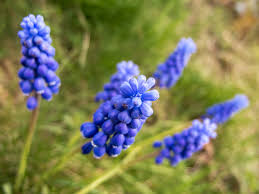
Plant Care Tips:
- Light: Provide bright, indirect light for Hyacinth, ensuring it receives at least 4-6 hours of sunlight per day.
- Watering: Keep the soil consistently moist but not waterlogged, especially during the growing season.
- Temperature: Maintain a cool environment, with temperatures between 50-60°F (10-15°C).
- Fertilization: Feed with a balanced fertilizer during the growing season.
- After Blooming: Allow the foliage to die back naturally after flowering, and store the bulbs for future blooms.
Why Choose Hyacinth: Hyacinth is cherished for its vibrant and fragrant blooms that come in various colors, including shades of blue, pink, and white. The sweet and lingering scent of Hyacinth adds a delightful and nostalgic touch to indoor gardens.
Incorporating Hyacinth Into Your Home: Place Hyacinth in areas where you want to create a burst of color and enjoy its sweet fragrance, such as on windowsills or tabletops. Consider planting multiple bulbs in containers for a more impactful display.
Choosing Hyacinth for your indoor garden introduces a plant that not only brings visual charm but also fills your home with the sweet and nostalgic scent of its blossoms. Immerse yourself in the vibrant beauty and delightful fragrance of Hyacinth, creating a cheerful and aromatic atmosphere in your indoor space.
20. Miniature Roses (Rosa chinensis minima):
Miniature Roses, with their petite blooms and classic rose fragrance, are a delightful and elegant choice for indoor gardens. Known for their timeless appeal, these compact roses bring a touch of romance and beauty to your living space.
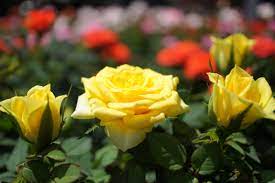
Plant Care Tips:
- Light: Provide bright, indirect light for Miniature Roses, ensuring they receive at least 4-6 hours of sunlight per day.
- Watering: Keep the soil consistently moist but not waterlogged, and avoid wetting the leaves to prevent diseases.
- Temperature: Maintain a moderate environment, with temperatures between 60-75°F (15-24°C).
- Fertilization: Feed with a balanced rose fertilizer during the growing season.
- Pruning: Regularly trim the plants to encourage bushiness and remove spent blooms.
Why Choose Miniature Roses: Miniature Roses are adored for their dainty and abundant blooms, often resembling their larger counterparts. The classic fragrance of roses adds a romantic and nostalgic atmosphere to indoor gardens.
Incorporating Miniature Roses Into Your Home: Place Miniature Roses in areas where you want to create a sense of romance and enjoy the classic scent of roses, such as bedrooms or living rooms. Consider arranging multiple miniature rose plants in a decorative container for a charming display.
Choosing Miniature Roses for your indoor garden introduces a plant that not only boasts timeless beauty but also fills your home with the enchanting fragrance of classic roses. Immerse yourself in the romantic ambiance created by the delicate blooms and sweet scent of Miniature Roses.
conclusion
In cultivating an indoor garden filled with fragrant delights, we have explored a diverse array of plants, each bringing its unique charm and aroma to your living space. From the classic elegance of Gardenia to the exotic allure of Passionflower, these plants not only add visual beauty but also engage your senses with their captivating fragrances. Whether you prefer the sweet notes of Miniature Roses or the invigorating scent of Eucalyptus, each plant offers a distinct olfactory experience. By carefully selecting and caring for these indoor treasures, you can transform your home into a sanctuary of both visual and aromatic beauty. Embrace the joy of cultivating your indoor garden, where every bloom and fragrance contributes to a harmonious and delightful living environment.

